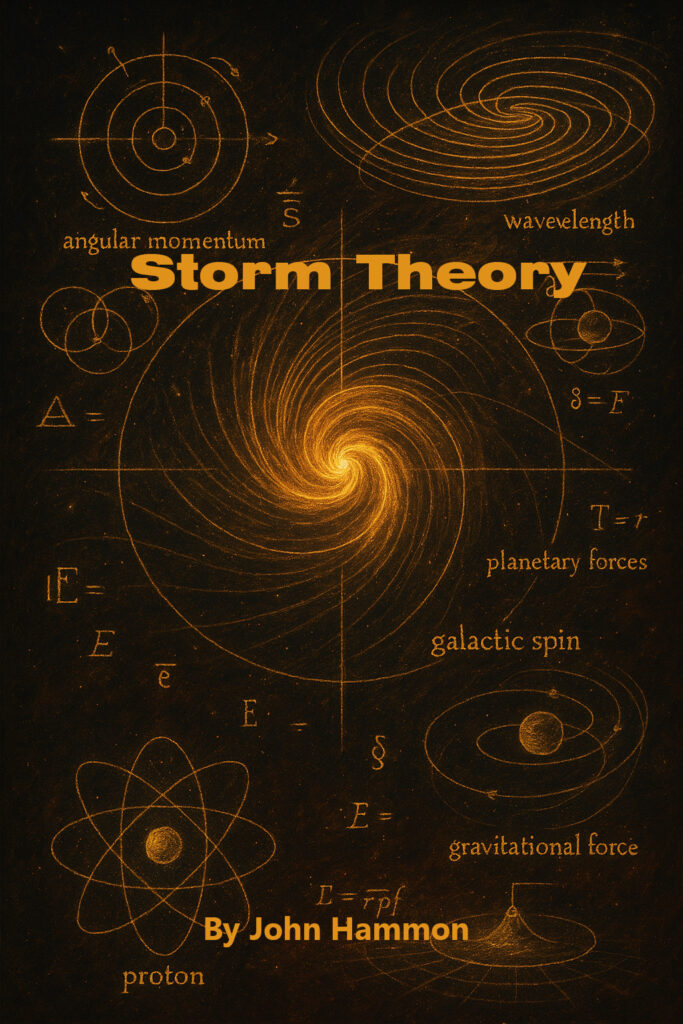
About the Book: Storm Theory
Storm Theory is a bold yet humble challenge to the foundation of modern physics—what I call PRS (Peer-Reviewed Science). It’s not a rejection of observation, but a demand for coherence.
For over a century, we’ve stacked equations on top of paradoxes:
- What is gravity, really? General Relativity says mass bends space, but never defines what space is made of. An emerging trend in social media is asking someone to explain gravity. Depending on their answer, you chat or simply move on because nobody really knows.
- Why do electrons orbit without losing energy? Standard physics handwaves it with quantum rules, but skips the mechanism.
- What powers atoms to persist? We’re told it’s just “how things are.”
- Where did the universe come from? The Big Bang offers an explosion from nothing and avoids the question of “what was there before?” Seriously, almost every aspect of PRS contradicts itself. Like, how can protons be perpetual motion machines when they contradict physics?
- What is dark matter and dark energy? Placeholders for the parts of the universe our models can’t explain.
Storm Theory offers a new foundation:
Not as disconnected answers, but as an integrated system.
At its core is the substrate—a fine, fluid-like medium (symbol: V) that fills space and gives rise to all forces through structured motion. From vortexes to pressure gradients, from magnetism to gravity, all are part of one dynamic field.
- Gravity becomes a vortex-driven flow, not a pull.
- Atoms are substrate engines—protons spin substrate in, electrons recycle it out.
- Light, charge, magnetism, fusion, time, and temperature all emerge from how this substrate moves and resists movement.
- The universe didn’t explode into being. It flowed, expanded, and resonated into structure.
How do I know?
Because once you see the universe as a living system—spinning, breathing, cycling through pressure and form—it stops contradicting itself. The pieces that once didn’t fit—quantum weirdness, cosmological fudge factors, thermodynamic dead ends—click into place.
Storm Theory is not the final word.
But it’s a clean start. A structured, fluid, and spiritual view of physics that might just make sense of everything.